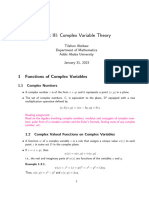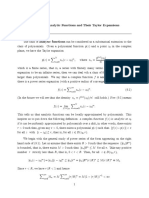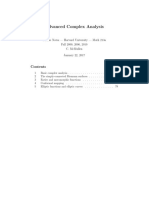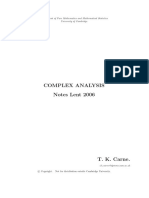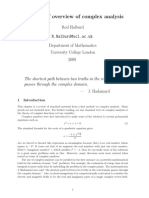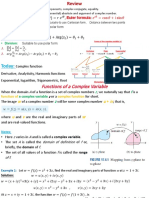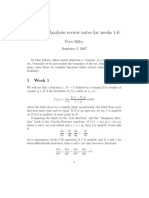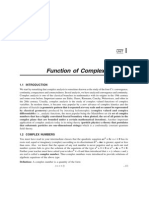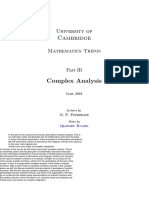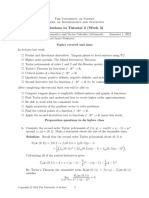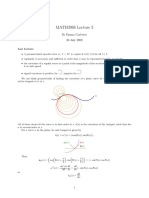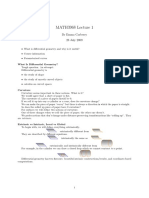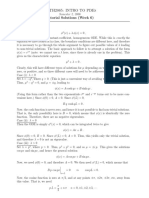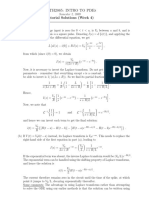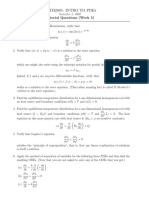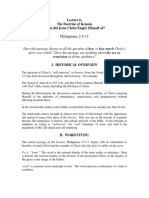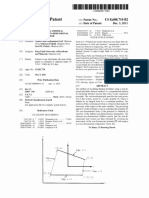0% found this document useful (0 votes)
94 views9 pagesIII-2 Analytic Functions
1) An analytic function is one that is continuously differentiable in an open set.
2) A function is analytic if and only if it can be represented by a power series with a positive radius of convergence.
3) The exponential, trigonometric, and logarithmic functions are all examples of analytic functions. Their derivatives and other properties are discussed.
Uploaded by
TOM DAVISCopyright
© © All Rights Reserved
We take content rights seriously. If you suspect this is your content, claim it here.
Available Formats
Download as PDF, TXT or read online on Scribd
0% found this document useful (0 votes)
94 views9 pagesIII-2 Analytic Functions
1) An analytic function is one that is continuously differentiable in an open set.
2) A function is analytic if and only if it can be represented by a power series with a positive radius of convergence.
3) The exponential, trigonometric, and logarithmic functions are all examples of analytic functions. Their derivatives and other properties are discussed.
Uploaded by
TOM DAVISCopyright
© © All Rights Reserved
We take content rights seriously. If you suspect this is your content, claim it here.
Available Formats
Download as PDF, TXT or read online on Scribd
/ 9


